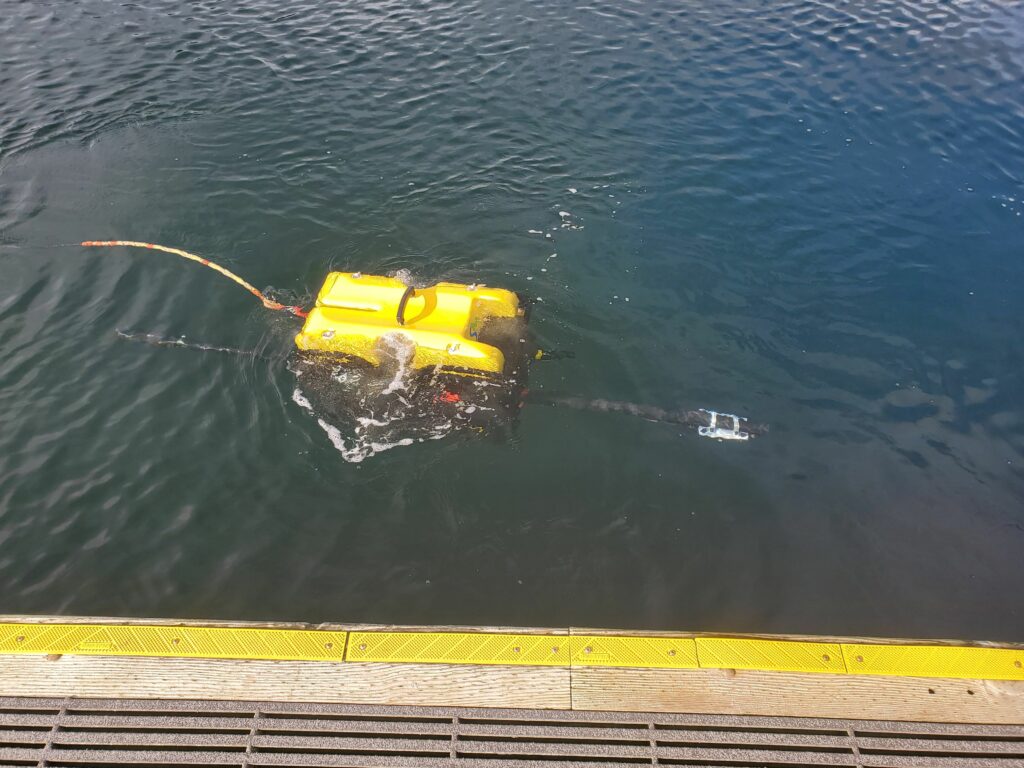Magnetometers detect disturbances in the earth’s magnetic field and are critical instruments for locating undetonated explosives along the ocean floor, referred to by the military as UXOs.
Magnetometers are typically bulky, towed by a manned marine vessel or pick-up truck-sized autonomous underwater vehicles (AUV), and scan the seafloor through a process that is arduous, time-consuming, and expensive.
The compact maneuverability offered by remotely operated vehicles (ROV), such as SEAMOR Marine’s Chinook ROV, has always held a great deal of promise to subsea engineers designing magnetometer scanning systems. However, technicians have been challenged by the electro-magnetic interference created by the electrical systems of these smaller units; that is, until recently.
Earlier this year, SEAMOR Marine was contracted at the request of a private client through Ocean Floor Geophysics for a third-party integration of their magnetometer with the Chinook ROV. “SEAMOR’s Chinook is compact, maneuverable, and reliable,” says Nathan Ehrenholz, subsea robotics engineer at Ocean Floor Geophysics. “It is the best ROV on the market at that price point for the sensitivity of work we are doing and that is why we chose it to trial our magnetometer.”
 (Image credit: SEAMOR)
(Image credit: SEAMOR)
Robin Li, President at SEAMOR Marine, explains that his team of engineers designed a custom extended attachment which holds the device far enough away from the ROV to mitigate potential electrical magnetic field interference. “ROVs are complicated devices with many electronic and mechanical components. However, the carefully refined design of the Chinook meant very little baseline interference which helped our magnetometer integration to go smoothly.”
Most ROV pilots make use of the built-in, movable camera during inspections and scans, but that was not an option for this trial. “The solution was to fix the camera in place, using the Chinook’s quiet thrusters to reposition the magnetometer while mapping rather than the pan/tilt feature of the built-in camera,” explains Li. “The submerged explosives might induce a flux of 5-20 nanoteslas, while the tilt mechanism might induce a flux of up to 500 nanoteslas which is far too much interference to get accurate readings. I’m glad to say that, when put to the test, the magnetometer trial integration for the Chinook was a success.”
The potential of such an agile, portable, and easily deployable magnetometer system extends well beyond military applications like UXO detection; these instruments could provide critical support for green energy infrastructure, including offshore wind farms, and crucial location data for submerged fiber optic cable lines.
“We are proud to see our Chinook ROV being deployed in ground-breaking ways,” states Inja Ma, SEAMOR Marine CEO. “Our team deeply values both innovation and collaboration, so we are very excited to see what we have been able to accomplish in partnership with the engineering team at OFG. Further, we are already looking to the future collaborations with other innovators in the field of marine technology.”





